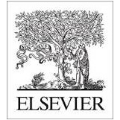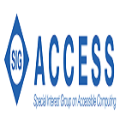Administering standardized examinations is a challenging task, especially for those universities for which colleges affiliated to it are geographically distributed over a wide area. Some of the challenges include maintaining integrity and confidentiality of examination records, preventing mal-practices, issuing unique identification numbers to a large student population and managing assets required for the smooth conduct of examinations. These challenges aggravate when colleges affiliated to universities demand academic and administrative autonomy by demonstrating best practices consistently over a long period. In this chapter, we describe a model for decentralized and autonomous examination system to provide the necessary administrative support. The model is based on two emerging technologies of Blockchain Technology and Internet of Things (IoT). We adopt a software architecture approach to describe the model. The prescriptive architecture consists of {\em architectural mappings} which map functional and non-functional requirements to architectural elements of blockchain technology and IoT. In architectural mappings, first, we identify common use-cases in administering standardized examinations. Then we map these use-cases to the core elements of blockchain, i.e. distributed ledgers, cryptography, consensus protocols and smart-contracts and IoT. Such kind of prescriptive architecture guide downstream software engineering processes of implementation and testing
翻译:管理标准化考试是一项具有挑战性的任务,对于其附属学院地理分布分布广泛的大学来说,管理标准化考试是一项具有挑战性的艰巨任务,特别是对那些其附属学院具有地域分布广泛的大学而言,其中一些挑战包括:保持考试记录的完整性和保密性,防止渎职,向大批学生发放独特的识别号码,管理顺利进行考试所需的资产。当大学附属学院要求学术和行政自主时,这些挑战就更加严峻,因为大学附属学院长期一致地展示最佳做法,从而要求学术和行政自主。我们本章描述了一个分散和自主考试制度的模式,以提供必要的行政支助。该模式以两个新兴的“链式技术”和“物联网”技术(IoT)为基础。我们采用软件结构方法来描述该模式。规范结构由~em建筑图组成,该结构绘制了对块式技术和IoT的建筑要素的功能和非功能要求。在建筑图中,我们首先确定了管理标准化考试的通用使用案例。我们随后将这些使用案例绘制成块链的核心要素,即分布式分类、加密、协商一致协议和智能合同以及IoT。这种规范性建筑结构指导下游系统实施和测试的下游软件工程过程。





